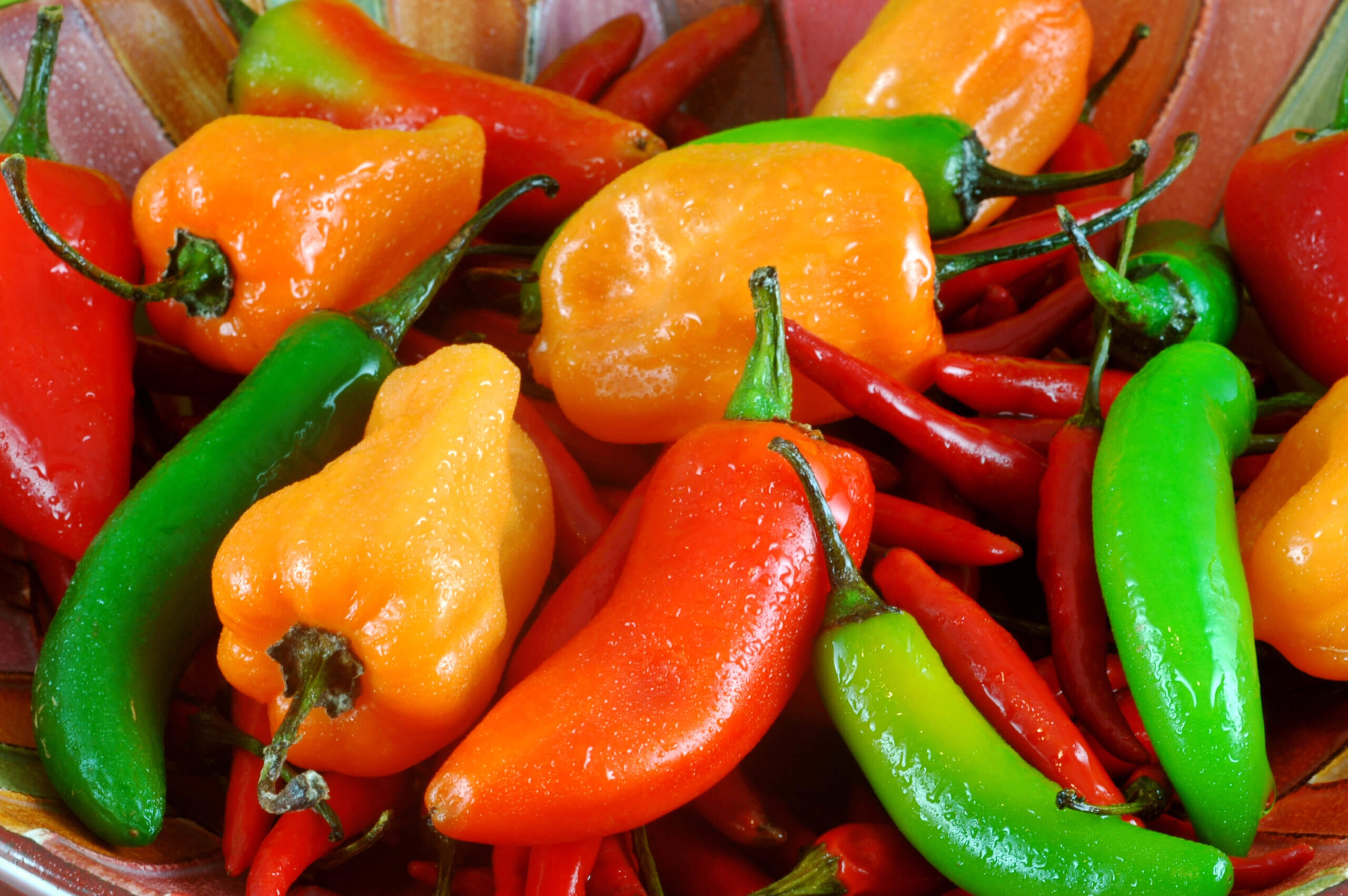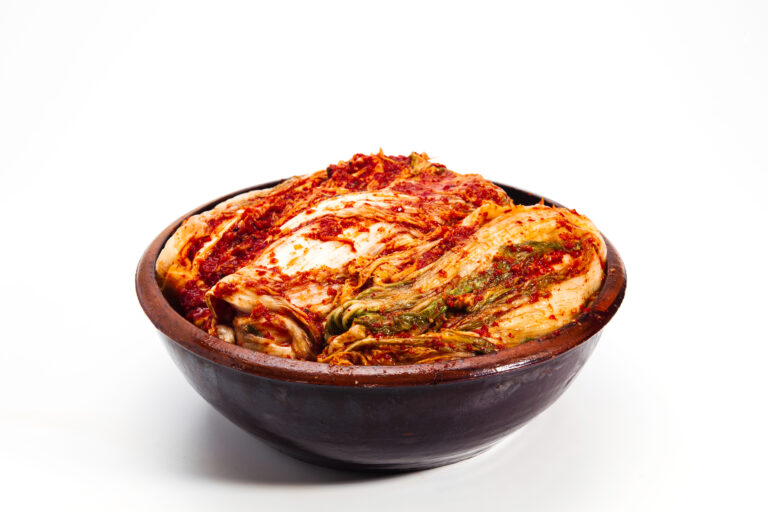10 Ways Pepper Flavor Enhancement Can Transform Your Cooking
Pepper’s multifaceted flavor profile, capsaicin’s culinary catalyst role, health benefits, historical significance, and flavor-enhancing properties make it a versatile and indispensable ingredient that elevates any dish with its kick and complexity.

When it comes to spicing up your meals, pepper is a powerhouse ingredient that can transform the mundane into the magnificent. Let’s dive into the reasons why pepper is a must-have in your culinary arsenal and how it enhances the flavors of any dish.
Disclosure: As an Amazon Associate, this site earns from qualifying purchases. Thank you!
1. Unpacking Pepper’s Flavor Profile

Pepper is no ordinary spice; it’s a complex character in the culinary world. With its piquant flavor and subtle earthy notes, pepper adds depth and complexity to dishes. Unlike other spices that may overshadow delicate flavors, pepper complements and accentuates the natural taste of ingredients, making it an indispensable tool in the kitchen.
The flavor of pepper is not just about spiciness; it’s a symphony of taste. Depending on the type and ripeness of the pepper used, you can detect hints of citrus, floral, or even woodsy undertones. This multifaceted flavor profile can transform a simple dish into something extraordinary, providing a sensory experience that is both nuanced and bold.
Moreover, pepper’s ability to enhance the other flavors within a dish is akin to a conductor leading an orchestra. It has the unique ability to bind and elevate the disparate notes of a recipe, ensuring that every bite is harmonious and satisfying.
2. The Heat Factor: Capsaicin’s Role

One of the primary reasons pepper can boost a dish’s flavor is due to capsaicin, the chemical responsible for its heat. Capsaicin stimulates the pain receptors in the mouth, which can actually increase saliva production and enhance one’s ability to taste. This heat doesn’t just add a kick; it helps to highlight and distribute flavors throughout the palate.
Capsaicin’s heat is more than a mere burn; it’s a culinary catalyst. It can cut through richness in creamy dishes or stand up to the robust flavors of meats and hearty vegetables. This makes pepper not just an addition, but an integral component in balancing flavors within a dish.
The heat from capsaicin is also believed to release endorphins, the body’s natural feel-good chemicals. This means that adding pepper to your dish can actually make you happier, providing a pleasurable eating experience that goes beyond taste.
3. Spice Up Your Life: Pepper Benefits

In addition to its flavor-enhancing properties, pepper brings a bevy of health benefits to the table. It has been shown to have antioxidant properties, helping to combat free radicals in the body. This can contribute to overall health and may help in preventing various diseases.
Pepper also aids in digestion by stimulating the stomach to produce more hydrochloric acid, which is necessary for breaking down proteins and other food components. This means that not only does pepper make your food taste better, but it also helps your body to process it more efficiently.
Furthermore, pepper has been used for its medicinal properties for centuries. It has anti-inflammatory and antibacterial qualities, making it a natural remedy for a host of ailments. Adding pepper to your diet is not just a culinary choice, but a health-conscious one as well.
4. Pepper: A Culinary History Tour
The use of pepper in cooking dates back thousands of years and spans many cultures. It was once so valuable that it served as currency and was a driving force in the global spice trade. The allure of pepper helped shape the modern world, as explorers set out in search of this “black gold.”
Pepper’s historical significance is matched only by its culinary impact. From the tables of ancient Rome to the spice blends of medieval Europe, pepper has been a constant presence in the evolution of global cuisine. Its ability to preserve and flavor food made it indispensable in the days before refrigeration.
Today, pepper continues to hold a place of honor in kitchens around the world. It is a common thread in the diverse tapestry of world cuisines, appearing in everything from classic French sauces to fiery Indian curries. Pepper’s rich history is a testament to its timeless appeal and culinary importance.
In the video, Food For Thought explains –
Food For Thought
- Black pepper originates from the lush rainforests of Kerala, India, which was considered the “garden of spices” in ancient times.
- Pepper was hugely valuable in ancient and medieval times, used as currency and a status symbol among wealthy Europeans.
- Myths emerged about dangerous serpents guarding pepper trees to protect the spice traders’ profits.
- Venice dominated the medieval pepper trade, purchasing from the Middle East and selling at inflated prices in Europe.
- Strange medieval recipes buried meat and dishes under excessive spices, whereas now spices complement flavors.
- Pepper’s value sparked age of exploration as European powers sought direct access to India’s spice groves.
- Portugal, the Dutch, the British and others fought brutal wars to control the hugely lucrative spice trade over centuries.
- Today’s ubiquitous pepper shakers obscure pepper’s bloody history as empires battled to dominate the spice trade.
- The over-spicing of medieval cuisine declined with the rise of calibrated French recipes emphasizing restraint.
- We consume vast amounts of pepper today, the “undisputed king of spices,” though its violent history is obscured.
5. The Chemistry Behind Pepper’s Zing
The sensation of heat when you bite into a peppery dish is the result of a chemical reaction. Capsaicin binds to the TRPV1 receptor in our mouths, which is responsible for detecting scalding temperatures. This tricks the brain into perceiving heat, even though there is no actual rise in temperature.
This zing that pepper provides is more than just a trick of the taste buds; it’s a complex interaction between chemistry and sensory perception. The compounds in pepper can actually make the tongue more receptive to other flavors, acting as a flavor enhancer in a molecular sense.
Pepper’s chemistry also contributes to its preservative qualities. The antimicrobial properties of the spice inhibit the growth of bacteria, which is why it has been used to cure meats and season dishes for centuries. The zing of pepper is not just a taste sensation; it’s a protective measure that has stood the test of time.
6. Balancing Dishes with Pepper’s Heat

Pepper’s heat is a powerful tool for balancing flavors in a dish. It can provide contrast, cutting through sweetness or richness, and can also build layers of flavor that make a dish more complex and satisfying. The key is to use pepper judiciously, as its heat can be both a friend and a foe in the kitchen.
When used in moderation, pepper’s heat can elevate a dish without overpowering it. It works in harmony with other spices and ingredients to create a well-rounded flavor profile. Chefs often use pepper to add a final touch of heat that can make a dish go from good to great.
However, it’s important to remember that everyone’s heat tolerance is different. What may be a gentle warmth to one person could be a fiery inferno to another. Finding the right balance of pepper’s heat is a skill that can make all the difference in achieving culinary excellence.
7. The Versatility of Pepper Varieties

Pepper comes in many varieties, each with its own unique flavor profile and heat level. From the popular black pepper to the more exotic white, green, and red peppercorns, the options are plentiful. This variety allows for a range of culinary applications, from subtle enhancements to bold statements.
The versatility of pepper is seen in its different forms. Whole peppercorns can be used in slow-cooked dishes and pickling, while ground pepper provides an immediate punch of flavor and heat. Cracked pepper offers a coarser texture and a more intense burst of spiciness, perfect for encrusting meats or adding to a peppercorn sauce.
Each variety of pepper can be matched to specific dishes and ingredients. For example, the mild heat and fruity notes of green peppercorns work well in lighter sauces and poultry dishes. On the other hand, the sharp bite of black pepper is a classic complement to red meats and hearty stews.
8. Maximizing Flavor: Pepper Pairings

Pepper’s ability to enhance flavor is not limited to a standalone role; it also excels in pairings with other spices and ingredients. The sharpness of pepper can be balanced with the sweetness of cinnamon or nutmeg, creating a warm and complex flavor profile. Similarly, pairing pepper with herbs like rosemary or thyme can add an aromatic depth to dishes.
Pepper also pairs well with acidic components such as lemon or vinegar. The acidity helps to cut through the heat of the pepper, creating a bright and balanced flavor. This combination is particularly effective in marinades and dressings, where the pepper can infuse the liquid with its zesty heat.
In sweet dishes, pepper can be an unexpected but delightful addition. A pinch of pepper in chocolate desserts or fruit compotes can intensify the flavors and add an intriguing twist. The key to successful pepper pairings is experimentation and an understanding of how flavors work together to create harmony on the plate.
9. Grinding Matters: Freshness Factor

The act of grinding pepper is not just a culinary ritual; it’s a crucial step in unlocking its full flavor potential. Pre-ground pepper can lose its potency and complexity over time, resulting in a less impactful taste. Freshly ground pepper, on the other hand, releases essential oils and aromatics that can elevate a dish to new heights.
The difference between pre-ground and freshly ground pepper is like night and day. The act of grinding pepper just before adding it to a dish ensures that its flavors are at their peak. This is why many chefs insist on using a pepper mill at the table or in the kitchen, as it allows for the freshest possible spice.
Moreover, the texture of freshly ground pepper can also play a role in flavor. A fine grind may blend seamlessly into a sauce, while a coarse grind can provide a more pronounced heat and a crunchy texture. The grind size can be adjusted to suit the dish and the desired flavor profile.
10. Elevating Recipes with Pepper’s Kick

Pepper’s kick is the secret weapon that can take a recipe from mundane to memorable. It’s not just about adding heat; it’s about injecting life and excitement into a dish. The sharpness of pepper can highlight the main ingredients, creating a culinary experience that is both bold and nuanced.
When used creatively, pepper can transform the flavor dynamics of a recipe. It can be the defining element in a spice blend or the subtle background note that ties everything together. Pepper’s kick is versatile, allowing it to play a starring or supporting role depending on the dish.






